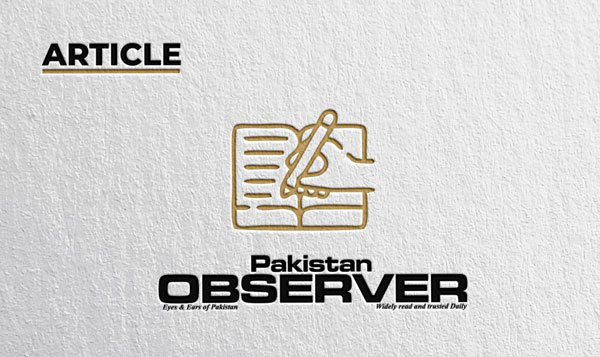FUTURE generations will suffer incalculable financial losses as a result of the destruction of the coastal environment and natural systems.
Coastal communities will be uprooted, livelihoods will be lost, fisheries will be lost, beaches and recreational facilities will be polluted, tourism will diminish and agricultural land near the coast will be lost.
The ultimate objective of integrated zone management is to advance national development by making sensible use of Pakistan’s coastal settings and resources while striking a balance between social, economic and environmental objectives.
Pakistan has ratified several international treaties, agreements and protocols, which include: The Pakistan Fisheries Ordinance, Convention on biological Diversity, (CBD), International Seabed Authority (ISBA), Convention on trade of endangered Species (CITES), RAMSER Convention, MARPOL, Kyoto Protocol etc.
But the human component of coastal hazards is frequently disregarded.
A sizable section of Pakistan’s population lives along the coast and as these places grow more susceptible to the consequences of climate change, the social and economic costs become more apparent.
These coastal risks often fall primarily on vulnerable people, who are often disadvantaged and poor.
In addition to losing their houses and means of subsistence, many communities also see their cultural heritage deteriorate.
It becomes a harsh reality that people are being uprooted from their ancestral homes.
New technologies and safety precautions are being put in place to assist prevent maritime accidents as the global maritime industry continues to change.
Creating new standards for maritime transportation has been a priority in recent years.
This involves creating new rules and specifications for the building, operation and design of vessels.
The International Maritime Organization (IMO) is aiming to enhance safety awareness and education in addition to creating new standards.
This includes programs like the (Global Safety Management) GSM program, which assists maritime businesses in creating and putting into place efficient safety management systems.
Additionally, the IMO is aiming to increase crew and passenger safety.
Initiatives like the Safe Manning Convention, which establishes minimum crew needs for various vessel types, are examples of this.
The dynamics of international trade, growth and security are significantly influenced by the seven major seaports: Karachi Port, Gwadar Port, Port Muhammad Bin Qasim, Keti Bandar Port, Ormara Port, Pasni Port and Jiwani Port.
The correct use of these ports has been hampered by issues like inadequate infrastructure, political unpredictability, security worries and socioeconomic traps.
Nevertheless, if strategic investment is prioritized, the nation still has a potential to thrive and advance.
The key to reducing the effects of climate change and coastal risks while simultaneously protecting Pakistan’s coastal regions’ distinctive natural resources and beauty is adaptation.
Comprehensive and flexible plans must be developed at the national and provincial levels for risk management, consequences and vulnerability assessments of sea level rise.
A variety of sea-level rise scenarios and their looming impacts on infrastructure, populations, ecosystems and coastal places should be considered in these evaluations.
Customized coastal climate services and adaptation information can be developed with the use of local knowledge.
To guarantee consistent, understandable messaging to coastal decision-makers and practitioners, verified sea-level information, such as national or provincial guidance on sea-level projections, could be created, reviewed and updated as needed in a timely manner (for example, feeding into national adaptation assessments).
In the light of lessons learned from worldwide programs, various decision-making strategies could be investigated and applied to manage uncertainty in sea-level rise estimates.
creation planning, infrastructure projects, coastal zone management and ecosystem-based adaptation such as promoting the timely planting of mangrove species could all benefit from the creation and application of sea-level scenarios and decision-making tools.
This will entail expanding on multifaceted involvement with local government, coastal communities and other pertinent stakeholders.
Actively engaging with local communities over years to decades and including them in decision-making frameworks to comprehend and co-design adaptation options will be necessary to increase their capacity to anticipate long-term change, such as retreat and relocation from the coast.
Pakistan’s ongoing exclusion from the Indian Ocean Rim Association (IORA), which is still the biggest intergovernmental multilateral platform devoted to the IOR, is a significant example.
A SWOT analysis of Pakistan’s diplomatic strategies regarding IORA is required, as is a suggested course of action for the Pakistani government.
To foster communication and mutual trust, the Pakistan Navy should extend invitations to their Indian colleagues to participate in upcoming Aman exercises under the broader IONS umbrella.
—The writer is contributing columnist.









